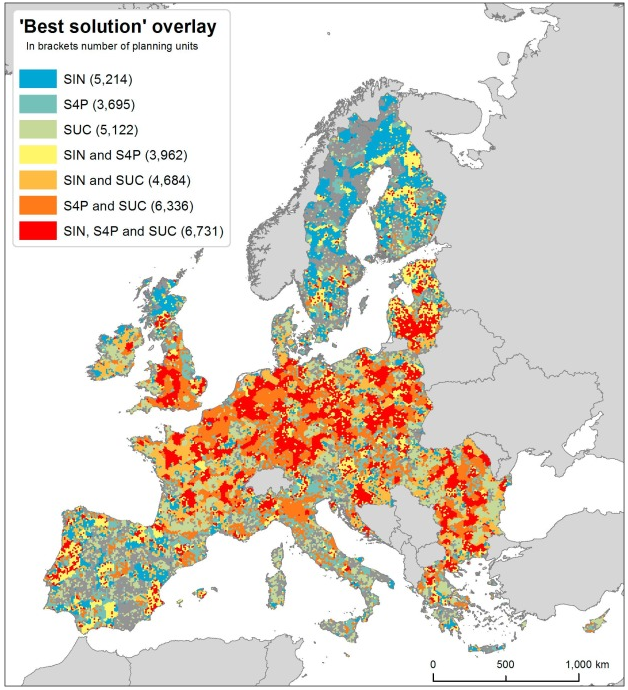
Ecosystems deliver essential goods such as food, energy, raw materials, air and water. They also regulate our climate and provide habitats for pollinators that fertilise our crops. These services are vital to our economy. Ecosystem degradation (due to pollution, habitat loss, climate change and the introduction of invasive alien species) lowers the capacity of ecosystems to continue providing these services in a sustainable way.
To keep ecosystems healthy, there is a global agreement to restore 15 per cent of degraded ecosystems by 2020. The EU has validated this global agreement in its Biodiversity Strategy to 2020. Also, the EU and its Member States have to develop plans and set priorities for ecosystem restoration so that ecosystems and their services are maintained or enhanced.
This sounds simpler than it actually is. How to select areas for ecosystem restoration so that the result is a greater supply of ecosystem services, including the provision of habitats for different groups of species, while also being cost-effective? Put differently, where can we develop new green infrastructure so that we achieve maximal results with minimal efforts?
A recently published study led by JRC scientists Sara Vallecillo and Joachim Maes introduces a methodology that can be used to guide the decision-making process in the selection of priority areas for ecosystem restoration. The selection of areas is based on datasets that describe the spatial distribution of biodiversity and ecosystem services. The optimal solution delivers a priority map which shows where an ecosystem can provide a wide range of ecosystem services. Next, they compared this baseline scenario with alternative scenarios. This helps address questions such as - What happens with the priority map if we focus on restoration in areas closer to where people live, so that citizens can profit more from the presence of multi-functional ecosystems that provide a wide range of ecosystem services? Or what would be the effect of putting more efforts into restoring the most degraded ecosystems?

Overlay of the ‘best solution’ of the three scenarios for selecting a green infrastructure network ‘Services in nature’ (SIN), ‘Services for people’ (S4P) and ‘Services under concern’ (SUC).
These scenarios set additional constraints that, while they may bring additional benefits, also incur certain costs. Restoration costs (which in this study were simulated by considering the cost of removing invasive alien species) are typically higher in populated areas or in areas where ecosystems are in very poor shape.
Importantly, overlaying the maps of different restoration scenarios can identify planning areas where the development of new green infrastructure and ecosystem restoration can help reach multiple objectives and targets, and thus save costs.
Further information
Related Content
Details
- Publication date
- 4 April 2018
